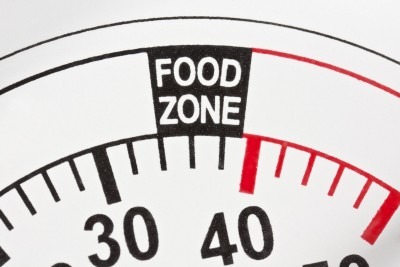Implementing family-style dining
George Bernard Shaw said, “There is no love sincerer than the love of food.”1 You can find more than 800 million references to food on the Internet. Food has always inspired a voice from us, and with our desire for independence we are inspired to require choice in our selections of food. Together these provide a powerful need that must be met for us to feel fulfilled.
Aging changes eating preferences and habits, reduces food tolerance and introduces medications that affect nutrient consumption. In the long-term care setting residents often have additional complications such as multiple disease states, choices between medications or food, increased intake of processed foods because of dentition issues or lack of cooking help and resources, and possibly a restrictive diet prescription.
One way to solve these problems and to promote quality of life, nutrient intake and weight maintenance is to provide meals in a setting that supports independence, promotes choice, offers social interaction and fosters the enjoyment of food. With this, an expansion of the use of serving options such as restaurant-style, family-style, Russian-style and buffet-style dining have emerged as alternatives to the previous institutional tray service provided in long-term care. The choice of dining style should be based on several considerations with the main one being: What do the residents prefer? For example, residents of a facility where residents feel they are paying to be served may not want to serve themselves; therefore, family-style service would not be a good fit. Initiating a dining delivery style no one wants will defeat the purpose of improving quality of life and nutrient intake.
FAMILY-STYLE DINING
Family-style diningis a method of serving food to diners seated at a table. Main and side dishes are brought to the table in serving bowls or on platters that are passed among the diners, who take what they want and transfer it to their own plates. This method of serving food works well in a home environment.
When done properly, advantages include: increased choice, improved socialization, improved or maintained motor and muscle skills, improved quality of life, and improved energy intake. While few research studies have measured the benefits of family-style dining, those that have been completed have shown positive outcomes. Nijs, et al. reported in ”Effect of Family-Style Meals on Energy Intake and Risk of Malnutrition in Dutch Nursing Home Residents: A Randomized Controlled Trial, 2006”,2 a decrease of malnourished residents by 13 percent when implementing family-style meals with an actual increase in malnutrition of 12 percent in the control group over the same amount of time.
Family-style serving requires the participation of the entire interdisciplinary team. Many considerations and systems involve more than one department and need to be addressed when implementing such a program.
RESIDENT SUCCESS
Not all individuals are able to succeed and be happy with family-style dining, so here are some key success points to consider. For best success with family-style dining, residents should be able to do the following:
- serve themselves and eat with minimal assistance
- voice their needs
- socialize well with others
- understand infection control in passing and serving food
- understand the dining style, portioning and diet/texture limitations.
Restrictive diets should not eliminate a person from the program, but special serving and seating arrangements may need to be worked out. In most cases, family-style dining residents should have little or no diet/texture restrictions.
When residents serve themselves, it is crucial for the staff to have a good understanding of resident eating habits:
- Is breakfast typically skipped?
- What is the resident’s eating pattern? (Do some eat more at noon than in the evening or vice versa?)
- How much does the resident consume?
MEAL PARTICIPATION
Assistance with cueing and setup will continue to be expected as well as offering a substitute when food is not being eaten. Communication of resident changes is vital in being proactive to potential weight and nutrient deficits. Key changes that require communication with the team are changes in selections and volume of food, changes in cueing needed, changes in motor function in passing/serving dishes, changes in the resident’s communication or understanding and changes in weight.
EQUIPMENT
Lack of equipment or improper equipment will set up the entire serving style for failure, possibly affecting safety and customer service as well. Equipment needs for family-style serving include:
- Lightweight serving dishes, platters and lids that are cool to the touch and that will maintain food temperature (hot or cold). The number needed per table is determined by your menu and the variety of choices offered
- Bread baskets and beverage pitchers
- Serving utensils such as tongs, forks, ladles and solid and slotted serving spoons
- Carts for transporting to dining rooms and round or oval trays for serving in a dining room connected to the kitchen, allowing all items for each table to be served before moving on to the next table
- Tables and chairs to seat 4-6 people optimum
SERVING
The wait staff is an extension of the meal service and, therefore, has responsibilities for food safety, cross-contamination prevention and food temperature palatability. In addition, their observations of residents and communication of those observations are keys to success.
FOOD TEMPERATURES
 Hot food should be hot and cold food should be cold per the perception of the resident (F364 and F371).3 A system should be in place to ensure immediate delivery and serving of food from the kitchen, proper reheating or replacement of food when needed, maintaining temperatures when all residents are not at the table when food arrives and to accommodate the passing of food.
Hot food should be hot and cold food should be cold per the perception of the resident (F364 and F371).3 A system should be in place to ensure immediate delivery and serving of food from the kitchen, proper reheating or replacement of food when needed, maintaining temperatures when all residents are not at the table when food arrives and to accommodate the passing of food.
Hot food and beverage safety is also a consideration. Russian-style service is often used for soups, coffee and hot cocoa. The server asks if resident would like an item and then serves the item if requested. Serving should be from tureen to a bowl at table or from hot pot to cup at table.
CROSS-CONTAMINATION
Defined as the transfer of bacteria from one location to another, cross-contamination can occur from person to person, surface to food, etc. Vehicles for transfer can include hands, cutting boards, gloves, sponges, towels and utensils.
Servers are instrumental in preventing cross-contamination in the dining room and in family-style dining. Teach residents and staff the key contact points for cross-contamination.
Handle plates, utensils and serving dishes properly. Hold items from the bottom or ends to prevent touching where a mouth would touch.Hold items away from clothing when servingandkeep hair and fingers away from food on serving plates.
Use hair restraint.While hair nets are required in the kitchen, the 2009 food code section 2-402.11 states that wait staff do not need to wear hair restraints if they present a minimal risk of contaminating food.4 To minimize risk it is recommended to tie back long hair and to not carry trays of food on shoulders when serving.
When passing foodaround the table, keep food away from your face and refrain from sneezing and coughing.Cover food when not being passed to maintain temperature and protect it from contamination.
Proper food handling includes never touching food with bare hands. Food Code 2009 section 3-301.11 covers this expectation in detail.4 For example, when assisting residents in buttering bread, bakery tissues can be used to hold the bread. Tongs and other utensils are appropriate for handling food. Gloves can be used but are not recommended, since they have an institutional feel and must be changed often.
In family-style dining, minimize the use of open condiment containers. However, when used they should be washed, sanitized and stored following each meal and cleaned during the meal service if needed.
Hand washing is a key step in preventing cross-contamination and is a priority when serving in a healthcare setting. According to the Centers For Disease Control and Prevention’s “Guideline for Hand Hygiene in Health Care Settings,” hands should be decontaminated before direct patient contact, after contact with intact skin, contact with bodily fluids or excretions, mucous membranes, non-intact skin and wound dressings; toileting, etc.5 Assisting with setup and eating should warrant good practice of decontaminating hands when in contact with utensils that residents have handled and when in contact with saliva such as in wiping food off a resident’s face.
CONCLUSION
Changing serving styles from tray service can encourage independence, promote choice and restore the love of food for residents. Family-style dining is one great serving style out of many that can accomplish this. Its success requires an interdisciplinary team and careful consideration of the key components of group dining.
Angela Sader, MBA, RD, LD, is clinical advisor for the American Association for Long Term Care Nursing. To contact her, email angela.sader@cox.net.
REFERENCES
- George Bernard Shaw Quotes, Brainy Quotes. Available at: www.brainyquote.com/quotes/authors/g/george_bernard_shaw_10.html.
- Nijs K, Graaf C, Blauw Y, et al. Effect of family-style meals on energy intake and risk of malnutrition in Dutch nursing home residents: A randomized controlled trial. J Gerontol A Biol Sci Med Sci.2006;61(9):935-42.
- Department of Health and Human Services and Centers for Medicare and Medicaid Services, CMS Manual System. Available at: www.cms.gov/Regulations-and-Guidance/Guidance/Transmittals/downloads/R19SOMA.pdf.
- US Food and Drug Administration, Food Code 2009. Available at: www.fda.gov/Food/FoodSafety/RetailFoodProtection/FoodCode/FoodCode2009/.
- CDC, Guideline for Hand Hygiene in Health-Care Settings October 2002. Available at: www.cdc.gov/mmwr/preview/mmwrhtml/rr5116al.htm.
I Advance Senior Care is the industry-leading source for practical, in-depth, business-building, and resident care information for owners, executives, administrators, and directors of nursing at assisted living communities, skilled nursing facilities, post-acute facilities, and continuing care retirement communities. The I Advance Senior Care editorial team and industry experts provide market analysis, strategic direction, policy commentary, clinical best-practices, business management, and technology breakthroughs.
I Advance Senior Care is part of the Institute for the Advancement of Senior Care and published by Plain-English Health Care.
Related Articles
Topics: Articles , Nutrition , Operations











